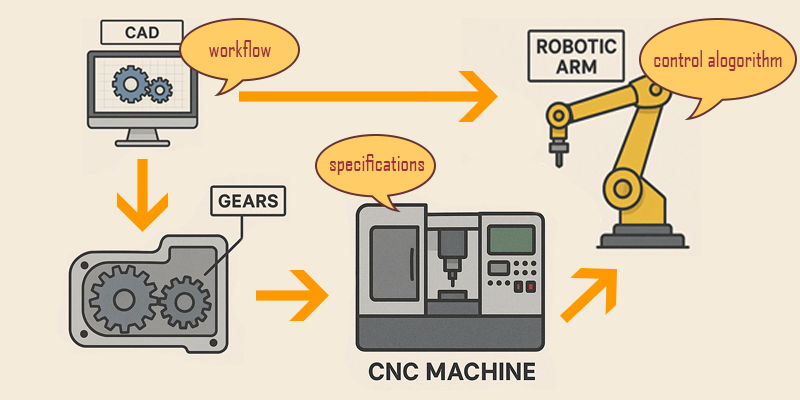The Modality Effect: How to Maximize Learning By Using the Right Channels
Published: April 9, 2025
Author: Mind My Learning

Isn’t it slightly convenient when someone narrates you a visual instead of asking you to read accompanying text to understand that visual? This isn't just a personal preference, it's actually a well documented cognitive principle known as the modality effect, a key component of Richard Mayer's Cognitive Theory of Multimedia Learning. Understanding this effect can dramatically improve how we teach and learn, especially in today's digital environment where multimedia learning, learning from more than one source of information simultaneously, has become the norm.
What Is the Modality Principle?
The modality principle is a key concept from Richard Mayer's Cognitive Theory of Multimedia Learning, suggesting that people learn better when visual materials are explained through spoken narration rather than on-screen text. In practical terms, this means replacing written explanations with audio narration when presenting graphics, animations, or other visual content.
"Replace on-screen text with narration or voiceover to explain visuals. This principle focuses on efficiently utilizing learners' cognitive resources to maximize knowledge retention."
This principle isn't just theoretical—it's backed by extensive research showing that proper application of the modality effect can lead to improved comprehension, increased recall, and better application of knowledge in real-world settings.
The Science Behind the Modality Effect
The modality effect is grounded in how our brains process information. According to cognitive science:
- We have separate processing channels for visual and auditory information (dual-coding theory)
- Each channel has limited capacity for processing
- Meaningful learning requires active processing in both channels
When you present text and visuals simultaneously in the same channel (visual), you create what researchers call a "split-attention effect" or cognitive overload. By contrast, when information is distributed across both visual (graphics) and auditory (narration) channels, learners can process more information simultaneously and integrate it more effectively.
When the Modality Effect Works Best
Research has revealed that the modality effect is particularly strong under specific conditions:
- System-paced learning: When the pace of presentation is controlled by the system rather than the learner
- Complex material: When learning material has high element interactivity (many interrelated pieces)
- First-time learning: Especially effective for novices encountering material for the first time
- Transfer tasks: Shows strongest benefits on tasks requiring application of knowledge to new situations
"The strength of the modality effect is moderated by the presentation pacing: effect is stronger for system-paced materials, and weaker for self-paced materials."
At Mind My Learning, we have a PowerPoint presentation hosted on our platform to assist you in creating presentations that take care of the modality effect.
Practical Applications for Educators and Students
For Educators:
- Replace text-heavy slides with visuals + narration: Instead of filling PowerPoint slides with bullet points, use relevant images with your verbal explanation
- Create narrated animations: When explaining processes or systems, pair simplified visuals with clear narration
- Design multimedia learning materials: For online courses or tutorial videos, prioritize spoken explanations for visuals rather than on-screen text
- Consider placement carefully: If you must use text, place it near the relevant visual elements (spatial contiguity principle)
For Students:
- Choose narrated videos over text tutorials when learning visual or procedural content
- Record audio summaries of visual study materials rather than writing text notes
- Create your own narrated explanations of diagrams or charts you're trying to learn
- Be strategic with replay: For complex material, replay narrated sections rather than trying to process everything at once
"Using both audio and visual channels can enhance learning since narration of text uses verbal channel, leaving visual channel free to process other visual information."
Examples of Good vs. Poor Application
Poor: A slideshow with complex animations and on-screen text explaining each step.
Better: A slideshow with animations and minimal text highlighting key points.
Best: A narrated animation that synchronizes verbal explanations with the corresponding visuals.
Limitations and Considerations
While powerful, the modality effect isn't universal:
- It may be less pronounced for self-paced learning environments
- As learners gain expertise in a subject, the effect can diminish
- For reference materials that will be consulted repeatedly, text may sometimes be preferable
- Some learners with specific learning needs may benefit from different approaches
Summary
- The modality principle recommends using spoken narration rather than on-screen text to explain visual materials
- This approach optimizes cognitive processing by utilizing both visual and auditory channels
- The effect is strongest for system-paced, complex materials and for novice learners
- Practical applications include creating narrated presentations, tutorials, and animations
- Both educators and students can leverage this principle to enhance teaching and learning effectiveness
References
- Mayer, R. E. (2001). Multimedia learning. New York: Cambridge University Press.
- Harskamp, E. G., Mayer, R. E., & Suhre, C. (2007). Does the modality principle for multimedia learning apply to science classrooms? Learning and Instruction, 17(5), 465-477.
- Moreno, R., & Mayer, R. E. (1999). Cognitive principles of multimedia learning: The role of modality and contiguity. Journal of Educational Psychology, 91(2), 358-368.
- Mousavi, S. Y., Low, R., & Sweller, J. (1995). Reducing cognitive load by mixing auditory and visual presentation modes. Journal of Educational Psychology, 87(2), 319-334.